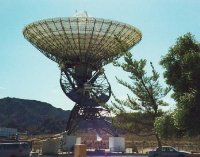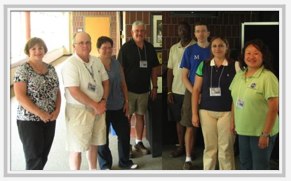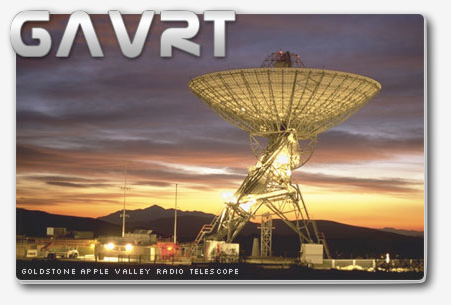Amanda Blough’s fourth-grade students at Corpus Christi School completed a unit on weather and the water cycle. The class talked about water, how it affects weather, and how it is recycled.
As a NASA Explorer Schools teacher, Amanda was able to add several additional resources to this unit after attending the NES summer recognition opportunity “Water Filtration” at NASA’s Marshall Space Flight Center in Huntsville, Ala. By searching NASA Educators Online Network, or NEON, she found a recommendation for a NASA e-Clips video about how water is recycled on the International Space Station. The video shows students how much water people consume on Earth per day compared to how much water astronauts use on the space station per day. Her students did the NASA Engineering Design Challenge: Water Filtration Challenge to see what it takes to filter water to make it clean again. Blough showed pictures of the Environmental Control and Life Support System at Marshall and explained how it works.
To cap off the lesson, Blough took her students for a tour of the local water treatment plant so they could see firsthand how their city cleans the water they use in their homes.

 After attending the NASA Explorer Schools Goldstone Apple Valley Radio Telescope Summer Experience, educators Kaci Hines, Cheryl May, Nancy Guillory and Donna Rand created a lesson that allows their students to control the GAVRT telescope from their classroom. Their lesson challenges students to determine the temperature of Jupiter by using the telescope. Three major tasks are involved in manipulating the telescope and acquiring accurate data: calibrating, scanning and recording data. Their lesson divides students into three separate groups to let each group learn the different tasks required to operate the telescope.
After attending the NASA Explorer Schools Goldstone Apple Valley Radio Telescope Summer Experience, educators Kaci Hines, Cheryl May, Nancy Guillory and Donna Rand created a lesson that allows their students to control the GAVRT telescope from their classroom. Their lesson challenges students to determine the temperature of Jupiter by using the telescope. Three major tasks are involved in manipulating the telescope and acquiring accurate data: calibrating, scanning and recording data. Their lesson divides students into three separate groups to let each group learn the different tasks required to operate the telescope. During the week of July 18, 2011, eight NASA Explorer Schools educators from across the country attended the Solar System Inside and Out research experience at the Space Telescope Science Institute in Baltimore, Md.
During the week of July 18, 2011, eight NASA Explorer Schools educators from across the country attended the Solar System Inside and Out research experience at the Space Telescope Science Institute in Baltimore, Md. Ten NASA Explorer Schools educators participated in the project’s Water Filtration Research Summer Opportunity at NASA’s Marshall Space Flight Center in Huntsville, Ala. The workshop took place from July 20-22, 2011.
Ten NASA Explorer Schools educators participated in the project’s Water Filtration Research Summer Opportunity at NASA’s Marshall Space Flight Center in Huntsville, Ala. The workshop took place from July 20-22, 2011. From July 18-22, 2011, 12 NASA Explorer Schools educators participated in the NES Goldstone Apple Valley Project located at the Lewis Center in Apple Valley, Calif.
From July 18-22, 2011, 12 NASA Explorer Schools educators participated in the NES Goldstone Apple Valley Project located at the Lewis Center in Apple Valley, Calif. From July 11-15, 2011, fourteen highly enthusiastic educators participated in the NES Coastal Observation Research Experience at NASA’s Wallops Flight Facility, located at Wallops Island, Virginia.
From July 11-15, 2011, fourteen highly enthusiastic educators participated in the NES Coastal Observation Research Experience at NASA’s Wallops Flight Facility, located at Wallops Island, Virginia.